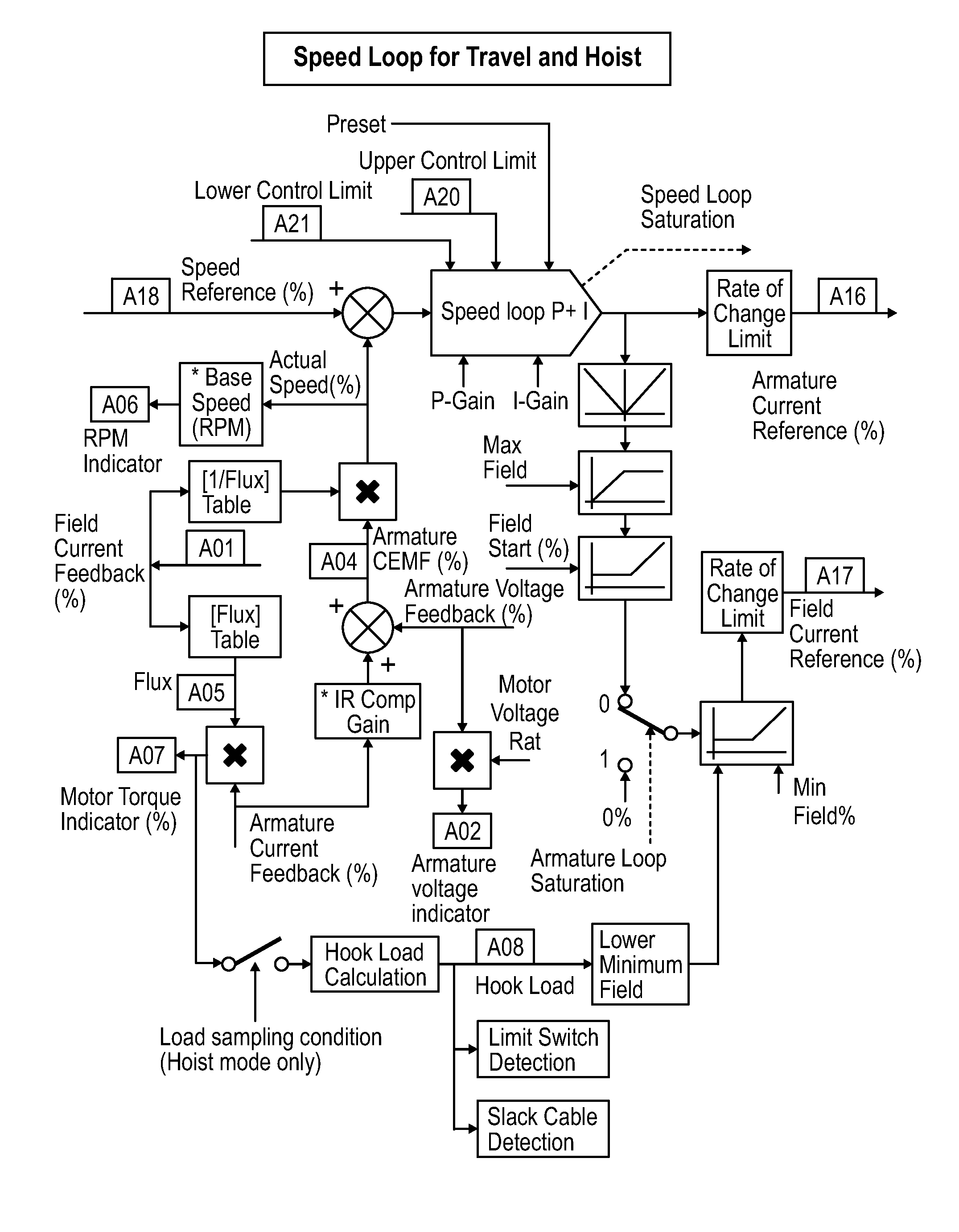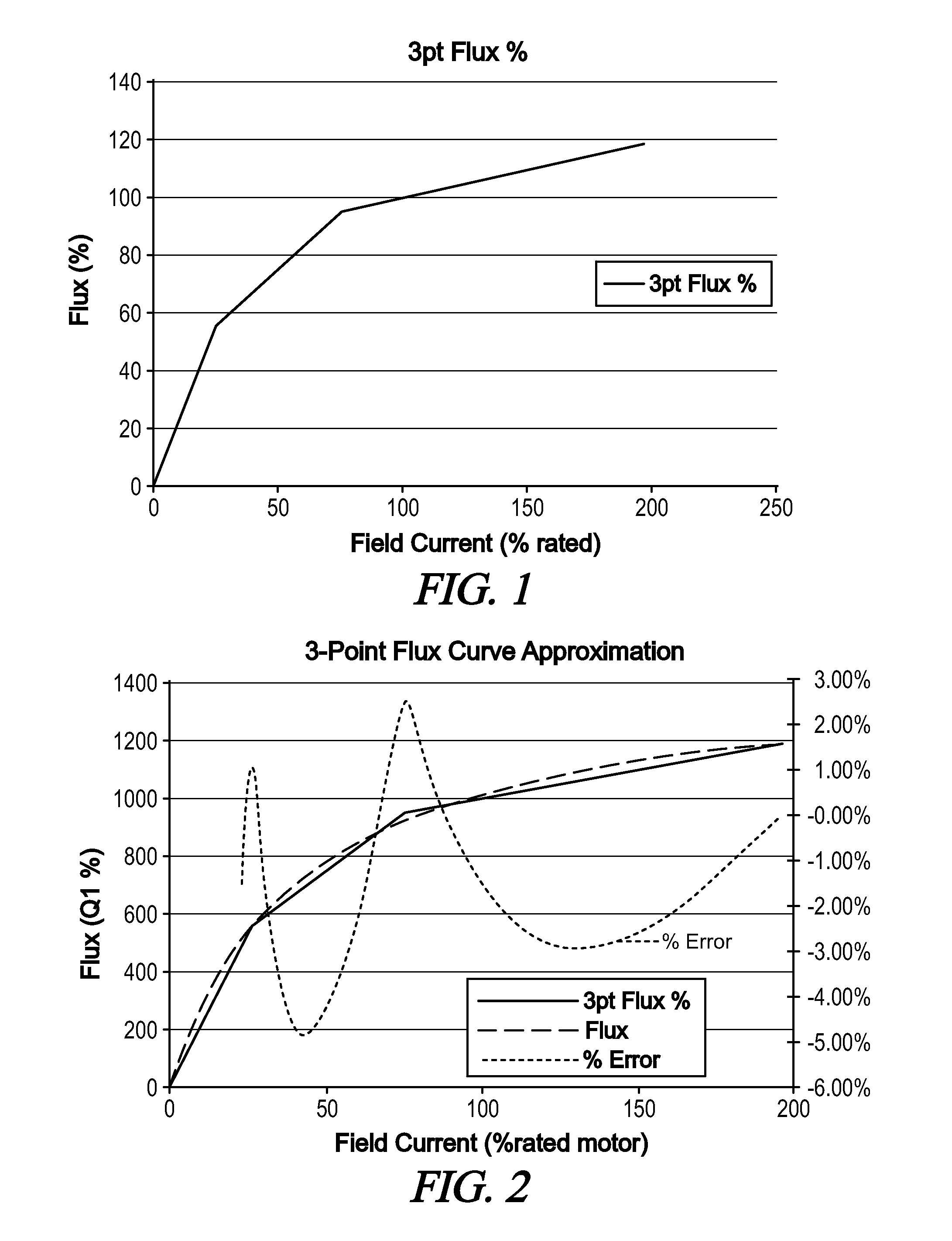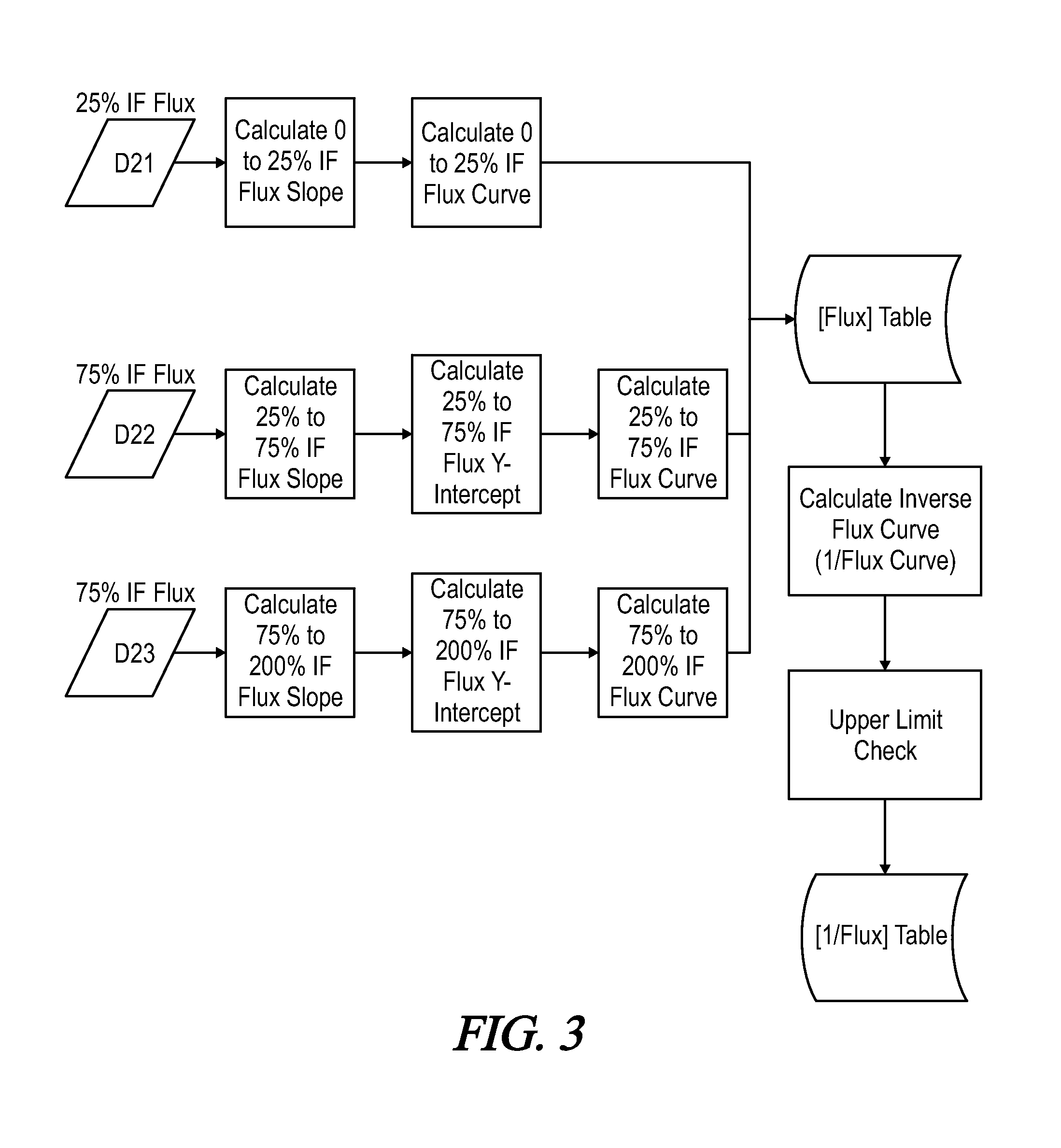Device and method for measuring and controlling the speed and torque of a DC motor
a technology of dc motors and control devices, applied in the direction of motor/generator/converter stoppers, dynamo-electric gear control, motor/generator/converter stoppers, etc., can solve the problem of motor velocity oscillation, the speed and torque of the dc motor cannot be measured directly, and the mismatch between calculated and actual flux can arise in the conventional control system, so as to reduce the velocity oscillation and the curve is flexible
- Summary
- Abstract
- Description
- Claims
- Application Information
AI Technical Summary
Benefits of technology
Problems solved by technology
Method used
Image
Examples
Embodiment Construction
[0019]Referring first to FIGS. 6 and 7, one embodiment of a DC motor control device 10 is shown. The motor control device 10 includes a control module 15 operatively coupled to a driver module 20. The control module 15 and driver module 20 have control inputs that are coupled to a user control and display device 25. The control module 15 conventionally includes a microprocessor, microcontroller, or other logic unit that is programmed to provide motor control commands to the driver module 20 at one or more control outputs. The driver module 20 receives and processes the control commands from the control module 15. In response to the motor control commands, the driver module 20 provides motor control signals at driver outputs 1-6 (FIG. 6).
[0020]As shown on FIG. 6, the driver outputs 1-6 are conventionally coupled to power switch modules Q1, Q2, and Q3 in a motor power circuit 30. The power switch modules Q1, Q2, and Q3 respond to the motor control signals to provide the voltage and cu...
PUM
 Login to View More
Login to View More Abstract
Description
Claims
Application Information
 Login to View More
Login to View More - R&D
- Intellectual Property
- Life Sciences
- Materials
- Tech Scout
- Unparalleled Data Quality
- Higher Quality Content
- 60% Fewer Hallucinations
Browse by: Latest US Patents, China's latest patents, Technical Efficacy Thesaurus, Application Domain, Technology Topic, Popular Technical Reports.
© 2025 PatSnap. All rights reserved.Legal|Privacy policy|Modern Slavery Act Transparency Statement|Sitemap|About US| Contact US: help@patsnap.com



